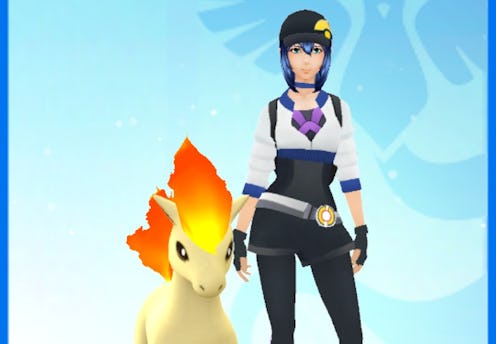
We first heard about the possibility of a game-changing “Pokemon Go” feature just about two weeks ago — and now, it’s here! What's more, if you’ve been wondering how to use the “Pokemon Go” buddy system, the good news is that it’s just as intuitive as most of the other recent additions to “Pokemon Go” have been. (Note that I said “recent additions,” because I think we can all agree that when the game first launched, the lack of instructions made it pretty much the opposite of intuitive. My, how the times do change!)
Fans of the augmented reality game first discovered what looked like the beginnings of the buddy system by datamining the game several weeks ago — and shortly thereafter, the official “Pokemon Go” website confirmed that the feature would in fact be arriving in an upcoming update. And apparently we didn’t have to wait for long for it, because the update arrived on Sept. 13 (right, I might add, in the middle of iOS 10’s release. Coincidence, or nah?).
What does the buddy system do? Basically, it makes it easier to evolve and power up your Pokemon. Once you select a Pokemon as your buddy, walking around the real world with it grants you bonus pieces of candy, which you can then use to beef up your Pokemon stats as you see fit. (That is, you've now got an additional way to earn candy that doesn't rely on either catching or trading Pokemon.) You can only have one buddy at a time right now, but the good news is that you can switch your buddy at any time.
Here’s how it’s done:
1. From The Map Screen, Go To Your Trainer Profile
CURVEBALL: Instead of tapping the big ol’ Pokeball at the bottom of the screen — which is almost always how a “how to use this particular ‘Pokemon Go’ feature” tutorial starts — this time, we’re going to your Trainer profile. Do that by tapping the picture of your Trainer’s head in the bottom left corner of the screen.
You’ll note that here, my trainer has a little Eevee face next to it. That's because I set myself a buddy last night when I was playing around with the feature for the first time. If this is your first time selecting a buddy, all you’ll see is your Trainer’s face — there won’t be a Pokemon next to it here.
2. Go To The Trainer Menu
Do that by tapping on the three stacked lines in the bottom right corner of the screen. Again, if you don’t have a buddy already set, you won’t have a little Eevee hanging out on your shoulder like I do here.
3. Select “Buddy”
Easy peasy. This will take you to you Pokemon inventory screen.
4. Select The Pokemon You Want To Be Your Buddy
Ponyta, I choose you!
It's super effective!
Now my Trainer gets to hang out with my Ponyta all day long.
5. Walk With Your Buddy
Walking certain distances with your buddy earns you the type of candy that Pokemon needs to evolve. (As such, you’ll probably want to choose a Pokemon you haven’t evolved or maxed out yet as your buddy. Otherwise, what the heck are you going to do with all that Pidgey candy if you don’t have any Pidgies to evolve?) Note that the rarity of your Pokemon determines how far you’ll have to walk to earn those sweet treats. For the curious, this chart details how far you need to walk in order to earn candy for each Pokemon. Use it wisely.
6. If You Want To Switch Your Buddy…
It can be done, but be warned that if you switch your buddy before you’ve reached a specific walking goal, your progress with your original buddy will be lost.
To switch your buddy, go to the buddy screen (Trainer profile > Trainer menu > Buddy), then tap the button in the lower right hand corner that looks like a downward-facing arrow and an upward-facing arrow hugging each other. Doing so will bring you to the above screen. Tap “Yes,” and you’ll be brought back to your Pokemon inventory screen. From there, you can choose your new buddy. (The process is the same as it was when you chose your first one.)
Congratulations! You have now mastered the "Pokemon Go" buddy system. May your Pokemon never worry that you're playing favorites.
Images: Lucia Peters/Bustle (9)